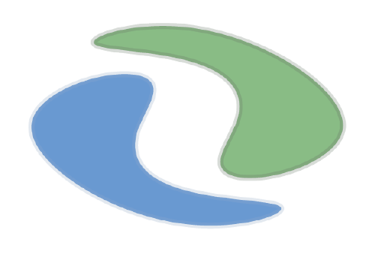Chebulic myrobalan is derived from Terminalia chebula, native to India, Nepal, Sri Lanka, China, and Southeast Asia, commonly found in dry tropical and subtropical forests up to 1,500 m elevation.
In India, it grows extensively in the foothills of the Himalayas, central forests of Madhya Pradesh, and the Western Ghats. The fruits are collected after natural fall or manually harvested before ripening, then dried in sunlight for medicinal use.
Phytochemistry
Chebulic myrobalan is rich in hydrolyzable tannins, polyphenols, and flavonoids, responsible for its potent antioxidant and adaptogenic properties.
Major bioactive constituents:
Chebulagic acid
Chebulinic acid
Gallic acid
Ellagic acid
Tannic acid
Flavonoids: quercetin, luteolin
Anthraquinones: emodin, rhein
These compounds contribute to its antimicrobial, hepatoprotective, and anti-inflammatory actions. Chebulagic acid, in particular, exhibits strong free radical scavenging and enzyme-modulating activity.
Traditional & Medicinal Uses
Chebulic myrobalan is one of the three fruits in Triphala, alongside Emblica officinalis (Amla) and Terminalia bellirica (Bibhitaki). It is considered a rejuvenative (Rasayana), balancing all three doshas — Vata, Pitta, and Kapha.
Traditional Ayurvedic uses include:
Enhancing digestion and promoting detoxification
Mild laxative for constipation and sluggish bowel movement
Liver tonic supporting bile secretion and detoxification
Rejuvenating tonic to promote longevity and mental clarity
Topical applications for wounds and ulcers
Used in oral care for gum and throat inflammation
Strengthening eyesight and improving general vitality
In Tibetan medicine, it is known as “King of Medicine” (Arura), and in Siddha medicine, it is used for respiratory ailments and nerve rejuvenation.
Pharmacological Studies
Modern research validates many traditional claims:
Antioxidant: Potent free radical scavenging activity due to gallic and chebulinic acids.
Digestive & hepatoprotective: Promotes bile flow, supports liver enzyme balance, and protects hepatocytes from toxins.
Antimicrobial: Inhibits Staphylococcus aureus, E. coli, and Candida albicans.
Neuroprotective: Enhances acetylcholine function and prevents oxidative neuronal damage.
Antidiabetic: Modulates glucose uptake and improves insulin sensitivity.
Anti-inflammatory: Reduces pro-inflammatory cytokine activity and COX inhibition.
Clinical evidence supports its use in managing constipation, gastritis, oral ulcers, and mild liver dysfunction.
Preparation & Dosage
Forms: Powder (churna), decoction (kwath), or standardized extract.
Typical dosage: 1–3 g powder daily with warm water or honey.
Decoction: 5–10 g fruit boiled in 200 ml water until reduced by half.
Topical use: Paste of fruit powder for ulcers or inflamed gums.
Cautions
Excess consumption may cause loose stools or dehydration.
Should be avoided during pregnancy or severe fatigue unless prescribed.
May potentiate the effects of hypoglycemic or laxative medications.
Identification Notes
Fruit: Ovoid to oblong, 2–4 cm long with five ridges; dark brown when mature.
Taste: Predominantly astringent, slightly sweet and sour.
Odor: Mildly aromatic, resinous.
Resin content: High; used in traditional ink formulations (hence the name Ink Nut).
Symbolic & Cultural Significance
In Buddhist and Ayurvedic traditions, Haritaki is revered as a sacred plant of enlightenment. It is often depicted in the hand of the Medicine Buddha, symbolizing healing, regeneration, and knowledge.
It is also regarded as one of the “nectar-bearing” fruits that support consciousness and longevity.
References
Bag, A., Bhattacharyya, S. K., & Chattopadhyay, R. R. (2013). The development of Terminalia chebula Retz. (Combretaceae) in clinical research. Asian Pacific Journal of Tropical Biomedicine, 3(3), 244–252.
Saleem, A., et al. (2002). Antioxidant and cytoprotective properties of chebulagic acid from Terminalia chebula Retz. Journal of Ethnopharmacology, 82(2–3), 191–198.
Lee, H. S., et al. (2005). Inhibitory effect of chebulagic acid on human immunodeficiency virus type 1 integrase and its cytoprotective effect against oxidative stress. Biological & Pharmaceutical Bulletin, 28(9), 1516–1519.
Park, Y., et al. (2010). Chebulic myrobalan attenuates high-glucose-induced oxidative stress and apoptosis in human endothelial cells. Phytotherapy Research, 24(8), 1192–1198.
The Ayurvedic Pharmacopoeia of India (2020). Haritaki (Terminalia chebula) fruit monograph. Government of India, Ministry of AYUSH.
Tropical Plants Database (2024). Terminalia chebula Retz. tropical.theferns.info
Terminalia bellirica
Distribution & Source
Introduction
Terminalia bellirica, commonly known as Bibhitaki, Baheda, or Beleric Myrobalan, is a large deciduous tree native to South and Southeast Asia. It is one of the three fruits in the famous Ayurvedic formulation Triphala (along with Terminalia chebula and Phyllanthus emblica). The fruit of T. bellirica is traditionally used for respiratory health, digestion, detoxification, eye disorders, and longevity. In Ayurveda, it is called Bibhitaki, meaning "fearless of disease," highlighting its importance in traditional medicine.
Botanical Description
T. bellirica is a tall tree that reaches 20–30 meters in height. It has a straight trunk, greyish bark, and widely spreading branches. Leaves are large, alternate, oval-shaped, and often clustered at the ends of branches. Flowers are small, greenish-yellow, and mildly aromatic, appearing in spikes. The fruit is a greyish-brown, ovoid drupe with a hard outer shell and contains a single seed.
Geographical Distribution
Terminalia bellirica is native to India, Nepal, Sri Lanka, Bangladesh, Bhutan, Myanmar, Thailand, and parts of Southeast Asia. In India, it is widespread across Himalayan foothills, Madhya Pradesh, Uttar Pradesh, Bihar, Rajasthan, Maharashtra, Andhra Pradesh, and southern states. It thrives in mixed deciduous forests and prefers well-drained loamy or clay-rich soils.
Harvesting Time
Fruits are harvested during late autumn to early winter (November–February) when they ripen and fall naturally. Mature seeds are separated and sun-dried for medicinal use. The kernel, shell, and dried pericarp are used in herbal preparations. The bark and leaves are also collected but less frequently.
Phytochemistry
Terminalia bellirica is rich in bioactive compounds, particularly tannins, phenolic acids, and glycosides. Key constituents include:
Tannins: Gallotannins, ellagic acid, chebulagic acid
Lignans & Glycosides: Termilignan, thannilignan, bellaricanin
Flavonoids: Rutin, quercetin, kaempferol
Fatty acids in seeds: Linoleic acid, palmitic acid, oleic acid
Others: β-sitosterol, gallic acid, ethyl gallate
These compounds contribute to its antibacterial, antioxidant, antiviral, and hepatoprotective effects.
Traditional Uses
In Ayurveda, Terminalia bellirica balances Kapha and Pitta doshas and is used for:
Chronic cough, asthma, and sore throat
Digestive issues like constipation, dyspepsia, and parasitic infections
Eye disorders, skin diseases, and hair care
Purifying blood and enhancing longevity
In Unani medicine, it is used as a laxative, expectorant, and tonic for brain and heart health.
Medicinal Uses (Modern Research)
Respiratory Health: Acts as an expectorant and bronchodilator; used for asthma, bronchitis, and laryngitis.
Digestive & Liver Support: Enhances digestion, improves gut microbiota, protects liver cells from toxins.
Antioxidant & Anti-inflammatory: High polyphenol content prevents oxidative stress, cellular damage, and chronic inflammation.
Antimicrobial: Effective against bacteria such as Staphylococcus aureus, E.coli, and fungal pathogens.
Blood Sugar & Lipid Regulation: Studies indicate hypoglycemic and cholesterol-lowering properties.
Eye & Hair Care: Traditionally used in kohl/anjan for vision and in hair oils to prevent premature greying and dandruff.
Emerging Research – Anti-Cancer and Antiviral Potential
Recent studies have shown that extracts of Terminalia bellirica contain gallic acid, chebulagic acid, and ellagic acid, which can induce apoptosis (programmed cell death) in certain cancer cell lines, including breast, liver, and colon cancer cells. These compounds suppress tumor growth by inhibiting oxidative stress, stopping cell proliferation, and modulating proteins like caspase-3 and p53. Additionally, research shows potential antiviral activity against influenza, hepatitis, and HSV, though more clinical trials are needed.
References
Reddy, V.P. et al. “Phytochemical and pharmacological profile of Terminalia bellirica.” Journal of Pharmacognosy & Phytochemistry.
Hazra, B. et al. “Antioxidant and free radical-scavenging effects of T. bellirica.” Natural Product Communications.
Choudhary G.P. “Anti-diabetic activity of T. bellirica fruit extract.” https://doi.org/10.1016/j.jep.2012.04.016
Gupta, P.C. “Biological and pharmacological properties of Terminalia bellirica.” Asian Pacific Journal of Tropical Biomedicine.
Baliga, M.S. “Triphala and its constituents: A review on traditional and modern applications.” PMID: 19754072
Pharmacopoeia of India – Ayurvedic standards for Terminalia bellirica.


Medical Benefits
Usage
Stress / Anxiety / Mood
• Lowers cortisol, modulates HPA-axis
• May increase GABA and serotonin
• Clinical trials show reduced perceived stress and anxietyHormonal / Vitality Effects
• Increased testosterone and DHEA-S in overweight/aging malesAnti-Inflammatory / Antioxidant
• Reduces inflammatory markers (TNF-α, IL-6)
• Decreases oxidative stress (shown in animal & in vitro studies)Cognitive / Sleep Support
• Some studies report improved sleep quality, memory, and attentionMuscle Strength / Performance
• RCTs show increased strength and muscle gains when combined with resistance training
Stress / Anxiety / Mood
• 125–500 mg/day of standardized WS extract (root + leaf)
• Duration: 6–8 weeks
• Example: Sensoril® used in clinical trialsHormonal Support / Vitality
• ~21 mg withanolide glycosides/day (Shoden® extract)
• Duration: 8 weeks
• Shown effective in overweight menGeneral Wellness / Adaptogen
• 250–500 mg/day root extract
• Duration: 4+ weeks
• Start at lower dose; increase as toleratedSafety Ceiling (Healthy Adults)
• Up to 1000 mg/day root extract
• Duration: 4 weeks safely tested
• Longer-term use still needs more study


An open-label, single dose, safety and pharmacokinetic study of Withania somnifera root extract in healthy volunteers — PubMed. PubMed
A Randomized, Double-Blind, Placebo-Controlled, Crossover Study Examining the Hormonal and Vitality Effects of Ashwagandha in Aging, Overweight Males — PubMed. PubMed
Safety of Ashwagandha Root Extract: RCT in Healthy Adults — PubMed. PubMed
Effects of Withania somnifera Extract in Chronically Stressed Adults — PMC. PMC
Pharmacologic overview of Withania somnifera, the Indian Ginseng — PMC. PMC





